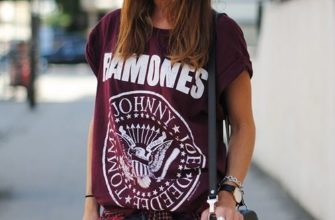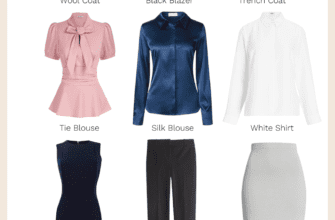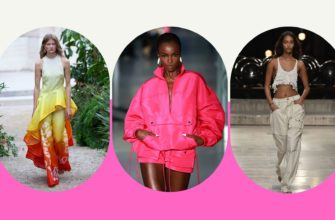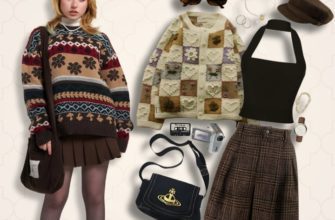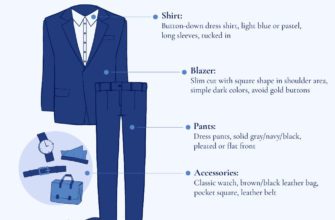In the vibrant tapestry of fashion history, one era stands out, an era that defied conventions and shattered boundaries. It was a time when rebellion and authenticity reigned supreme, birthing a subculture that would forever change the landscape of the industry. This is the story of grunge fashion – a genre that emerged from the gutters of underground music and captured the hearts of a generation.
With its roots intertwined in the streets of Seattle, grunge fashion encapsulated a raw and unfiltered energy that resonated with disgruntled youth. It was a movement that eschewed the glitz and glamour of mainstream fashion, opting instead for a more rugged aesthetic that embraced imperfections and celebrated individuality. From tattered flannel shirts and ripped jeans to worn-out band t-shirts and combat boots, grunge became a symbol of authenticity in a world dominated by artificiality.
Revolutionize Your Health & Lifestyle!
Dive into the world of Ketogenic Diet. Learn how to lose weight effectively while enjoying your meals. It's not just a diet; it's a lifestyle change.
Learn MoreAt its core, grunge fashion reflected the counter-cultural spirit of a generation disillusioned by societal norms. It was a visual manifesto that challenged the status quo, rejecting the glossy images and polished looks propagated by the fashion elites. Grunge fashion dared to be different, standing as a defiant statement against conformity and urging individuals to embrace their unique identities.
- The 90s Grunge Movement: A Fashion Revolution
- Evolving Subcultures: The Birth of Grunge
- Rise of Alternative Music: Influence on Fashion
- Grunge Style: Embracing Individuality
- Unconventional Fashion Choices: Torn Jeans and Flannel Shirts
- Minimalist Aesthetic: Rejecting Excess
- Grunge Goes Mainstream: Impact on the Fashion Industry
- Designer Adaptation: High Fashion Meets Street Style
- Influence on Runways: From Marc Jacobs to Alexander Wang
- Reviving Grunge: Modern Interpretations
- Questions and answers
The 90s Grunge Movement: A Fashion Revolution
The 1990s saw the emergence of a cultural movement that transformed the fashion landscape and challenged traditional norms. This era was characterized by a distinctive aesthetic that rebelled against mainstream glamour and embraced a raw and unpolished style.
The grunge movement, as it came to be known, originated in the underground music scene of Seattle, Washington. It was a direct response to the excesses of the 1980s, rejecting the glossy, over-the-top fashion of the time in favor of a more laid-back and anti-establishment look.
Grunge fashion embodied a sense of authenticity and individuality. It celebrated imperfections, with torn jeans, oversized flannel shirts, and unkempt hairstyles becoming iconic elements of the style. The movement embraced a thrift store aesthetic, with its proponents preferring second-hand clothing over designer labels.
At its core, grunge fashion was about self-expression and a rejection of societal expectations. It gave voice to a generation disillusioned with the commercialism and conformity of mainstream culture. Its impact extended beyond clothing, influencing music, art, and even attitudes towards gender and sexuality.
The 90s grunge movement revolutionized the fashion industry by challenging traditional notions of beauty and elegance. It paved the way for a more inclusive and diverse approach to style, making room for alternative expressions of identity. Its influence can still be felt today, as elements of grunge continue to inspire designers and individuals seeking a fashion revolution.
Evolving Subcultures: The Birth of Grunge
Grunge style, with its gritty and disheveled aesthetic, spoke to the disaffected youth of the time, who were seeking an alternative to the glossy mainstream fashion. It rejected the polished and glamorous looks of the era in favor of a more raw and authentic expression of individuality.
|
The subculture found its roots in the underground music scene, particularly in the Pacific Northwest, where bands like Nirvana, Pearl Jam, and Soundgarden gained popularity. These musicians became the faces of grunge, embodying the spirit of rebellion and nonconformity that defined the movement. Grunge fashion was characterized by its thrift store finds, with flannel shirts, ripped denim, and oversized cardigans becoming staple pieces. The DIY approach to fashion became a form of self-expression, as individuals sought to create an image that reflected their rejection of mainstream ideals. |
Incorporating elements of punk, grunge promoted a do-it-yourself attitude, encouraging creativity and individuality. It rejected the notion that fashion needed to be expensive or exclusive, instead embracing a more inclusive and accessible approach.
Although grunge may have originated as a reaction against the commercialization and superficiality of the fashion industry, its influence cannot be denied. The rise of grunge challenged traditional fashion standards and paved the way for a more diverse and unconventional style.
Rise of Alternative Music: Influence on Fashion

Exploring the impact of alternative music on the fashion world is an intriguing journey into the relationship between sound and style. The emergence of alternative music in the 90s led to a cultural shift that influenced not only the music industry but also the fashion industry. This section delves into the ways in which alternative music scenes and subcultures influenced fashion trends, fostering a sense of individuality, rebellion, and authenticity.
- Expression through Clothing: Alternative music challenged mainstream conventions and encouraged individuals to express themselves through their clothing choices. From grunge to punk to the gothic scene, these subcultures embraced a distinctive fashion aesthetic that rejected societal norms and embraced a DIY ethos. Flannel shirts, ripped jeans, band t-shirts, and leather jackets became symbols of rebellion, reflecting the raw and edgy sounds of alternative music.
- Embracing Individuality: The rise of alternative music created a space where individuality was celebrated, and this was mirrored in the fashion choices of the era. Fans and musicians alike sought to break free from the homogeneous styles of the past, embracing a wide range of influences and creating unique looks. This newfound sense of individuality extended beyond the stage and into the everyday lives of alternative music enthusiasts.
- Iconic Style Icons: Alternative music introduced a new wave of style icons who became symbols of authenticity and nonconformity. Musicians such as Kurt Cobain, Courtney Love, and Gwen Stefani had a profound influence on fashion, inspiring fans around the world to emulate their distinctive looks. Their fashion choices became closely tied to the music they created, blurring the lines between music and fashion.
- Underground Fashion Brands: With the rise of alternative music, underground fashion brands emerged, catering to the unique style preferences of alternative music subcultures. These brands offered an alternative to mainstream fashion, providing clothing options that aligned with the rebellious spirit of alternative music scenes. By supporting these independent brands, alternative music enthusiasts further differentiated themselves from mainstream trends.
- Legacy and Continuation: The influence of alternative music on fashion continues to be felt today. The grunge-inspired fashion trends of the 90s have experienced multiple revivals, with designers constantly drawing inspiration from the subversive and unconventional styles of the era. Alternative music continues to shape and redefine fashion, leaving behind a lasting legacy of individuality and self-expression.
Overall, the rise of alternative music in the 90s had a significant influence on fashion, challenging mainstream conventions and promoting a sense of rebellion and individuality. The unique and distinctive styles embraced by alternative music scenes continue to inspire and shape the fashion world today, serving as a testament to the enduring power of music as a cultural force.
Grunge Style: Embracing Individuality
In a decade characterized by artistry and rebellion, the grunge movement emerged as a powerful force in the fashion world. This revolutionary style was not just about following trends or conforming to societal norms, but rather it was a celebration of individuality and self-expression.
Grunge style embraced a nonchalant attitude towards fashion, rejecting the polished and pristine aesthetic that dominated previous eras. Instead, it championed a raw, unkempt look that celebrated imperfections and embraced a do-it-yourself mentality.
From oversized flannel shirts and ripped jeans, to band t-shirts and combat boots, grunge style allowed individuals to create their own unique fashion statement. It was about embracing one’s own personal style without conforming to societal expectations. This fashion movement gave people the freedom to express themselves authentically and unapologetically.
The grunge style was a rebellion against the mainstream fashion industry, which had long dictated what was considered stylish and acceptable. It was a rejection of rigid beauty standards and a celebration of the unconventional, the imperfect, and the nonconformist.
Grunge style empowered individuals to redefine beauty and fashion on their own terms. It gave a voice to those who felt marginalized by traditional ideals of attractiveness. This movement paved the way for a more inclusive and diverse fashion landscape, where everyone could find a place for their unique style and individuality.
Overall, grunge style was more than just a fashion trend. It was a statement of self-acceptance and the belief that beauty comes in many different forms. By embracing individuality, grunge fashion revolutionized the industry and shaped the way we perceive and celebrate personal style.
Unconventional Fashion Choices: Torn Jeans and Flannel Shirts

In the realm of alternative fashion during the 1990s, certain trends emerged that defied societal norms and challenged traditional notions of style. Embracing a rebellious spirit, individuals chose to express themselves through unconventional fashion choices, turning torn jeans and flannel shirts into iconic symbols of the grunge movement.
At the heart of this fashion revolution was a deliberate rejection of polished and refined aesthetics. Instead, torn jeans became a statement of nonconformity, embracing a disheveled and distressed look that defied the pristine image of mainstream fashion. The intentional rips and frayed edges created an alluring charm that communicated a sense of rebellion and authenticity.
Flannel shirts, often associated with lumberjacks and blue-collar workers, found their way into the wardrobes of grunge enthusiasts around the world. The soft and plaid fabric exuded a sense of simplicity and comfort, challenging the notion that fashion required ostentation and luxury. These shirts, often oversized and worn unbuttoned over band t-shirts, became a tangible representation of the grunge culture’s embrace of individuality and anti-establishment sentiments.
While torn jeans and flannel shirts may have seemed unconventional at the time, these fashion choices played a crucial role in democratizing style and redefining beauty standards. The grunge movement, with its focus on embracing imperfections, paved the way for a more inclusive and diverse approach to fashion. By breaking away from the constraints of traditional fashion norms, individuals were able to express their unique identities and challenge societal expectations.
Even today, the influence of torn jeans and flannel shirts can still be felt in contemporary fashion. The grunge aesthetic continues to inspire designers and individuals alike, reminding us of the power of unconventional choices to redefine and shape the industry.
Minimalist Aesthetic: Rejecting Excess
In the realm of fashion, a revolutionary movement emerged during the 1990s that sought to break away from the ostentatious and extravagant styles of the past. The minimalist aesthetic embodied a rejection of excess, embracing simplicity, understatement, and clean lines instead. This shift in fashion ideology reflected a cultural desire for authenticity, individualism, and a return to the basics.
The minimalist aesthetic was characterized by a stripped-down approach to clothing, devoid of embellishments and unnecessary adornments. This restrained style was in stark contrast to the flamboyance and opulence of previous eras, such as the excesses of the 1980s. The focus was on quality rather than quantity, with an emphasis on well-crafted pieces made from high-quality materials.
This movement was not only a reaction to the wealth and consumerism of the time but also a response to the growing environmental concerns. The minimalist fashion movement advocated for a more sustainable approach to dressing, encouraging the purchase of timeless and versatile pieces that would withstand the test of time. It rejected the throwaway culture and embraced a more mindful and conscious way of consuming.
| Minimalist Aesthetic | Rejecting Excess |
| Clean lines | Understatement |
| Simplicity | Authenticity |
| Quality over quantity | Environmental consciousness |
| Timelessness | Sustainability |
The minimalist aesthetic not only influenced clothing but also extended to other aspects of life, including interior design, art, and even lifestyle choices. It became a statement against the excesses of consumer culture, valuing substance over superficiality and prioritizing authenticity and individual expression. This fashion revolution of the 1990s challenged the status quo and paved the way for a new era of minimalist style that continues to inspire and influence fashion today.
Grunge Goes Mainstream: Impact on the Fashion Industry
The widespread adoption of grunge fashion in the 1990s had a profound influence on the fashion industry, forever changing the landscape of style and trends. This unique subculture movement, characterized by its rebellion against mainstream fashion norms and its nonchalant, anti-establishment attitude, quickly gained traction and infiltrated the mainstream, leaving an indelible mark on the fashion industry as a whole.
- Grunge challenged the conventional notions of beauty and aesthetics, introducing a raw and edgy style that appealed to a younger generation dissatisfied with the polished and glamorous looks of previous eras.
- The fashion industry, which had predominantly focused on high-end designer brands and their meticulously crafted garments, was forced to take notice of the grunge movement’s DIY (do-it-yourself) ethos. This led to a shift in the industry’s perception of high fashion, with an increased emphasis on streetwear and the incorporation of elements that exuded a more effortless and casual vibe.
- Grunge challenged gender norms with its androgynous fashion choices, blurring the lines between traditional masculine and feminine clothing. The impact of this gender-neutral approach can still be seen in contemporary fashion, as designers continue to push boundaries and embrace fluidity in their collections.
- Influential musicians and bands, such as Nirvana and Pearl Jam, played a pivotal role in popularizing the grunge aesthetic. Their music videos and album cover art showcased the fashion choices synonymous with the subculture, igniting a global fascination with grunge fashion and propelling it into the mainstream consciousness.
- The grunge movement prompted a resurgence of vintage and thrift store shopping, as individuals sought to recreate the effortlessly cool aesthetic on a budget. This shift created a new market for second-hand clothing and influenced the rise of sustainability in the fashion industry.
In conclusion, the emergence of grunge fashion as a mainstream trend had a far-reaching impact on the fashion industry. Its subversive nature and rebellion against conventional fashion norms sparked a revolution that changed the perception of style, leading to the integration of streetwear, gender-neutral fashion, and a renewed focus on sustainability. The legacy of grunge continues to resonate in the fashion world, serving as a constant reminder that individuality and nonconformity can reshape an entire industry.
Designer Adaptation: High Fashion Meets Street Style
In the era of grunge fashion in the 90s, the blending of high-end designer fashion with the edginess and individuality of street style became a defining characteristic. This section explores how designers successfully adapted their creations to incorporate the rebellious and unconventional aesthetics of street fashion.
By embracing the ethos of street style, designers brought a fresh perspective to the world of high fashion. They recognized the appeal of the counter-culture movement and sought to infuse their designs with elements that resonated with the nonconformist spirit. This fusion of opposing worlds created a powerful and influential style shift in the industry.
The designer adaptation of street style manifested in various ways. One approach was through the use of unexpected materials and unconventional silhouettes. Designers experimented with distressed fabrics, vintage textiles, and oversized proportions, challenging the traditional notions of sartorial elegance. Through these unconventional choices, they aimed to capture the raw energy and nonchalant attitude of the streets.
Furthermore, designers drew inspiration from street subcultures, incorporating their distinctive motifs and symbols into their collections. Graffiti art, punk aesthetics, and DIY culture found their way into high fashion runways, creating a sense of rebellion and authenticity. These borrowed elements added a sense of gritty urbanism to the refined world of designer fashion.
Another significant aspect of the designer adaptation was the merging of luxury with accessibility. They sought to make high fashion more inclusive by creating affordable lines inspired by street style. This democratization of fashion allowed a wider audience to partake in the once exclusive world of designer labels, further blurring the boundaries between high-end and street fashion.
In conclusion, the designer adaptation of street style during the rise of grunge in the 90s revolutionized the industry by breaking down barriers and challenging traditional notions. This fusion of high fashion and street style enabled designers to tap into the rebellious and individualistic spirit of the era, resulting in a fashion revolution that continues to influence the industry to this day.
Influence on Runways: From Marc Jacobs to Alexander Wang
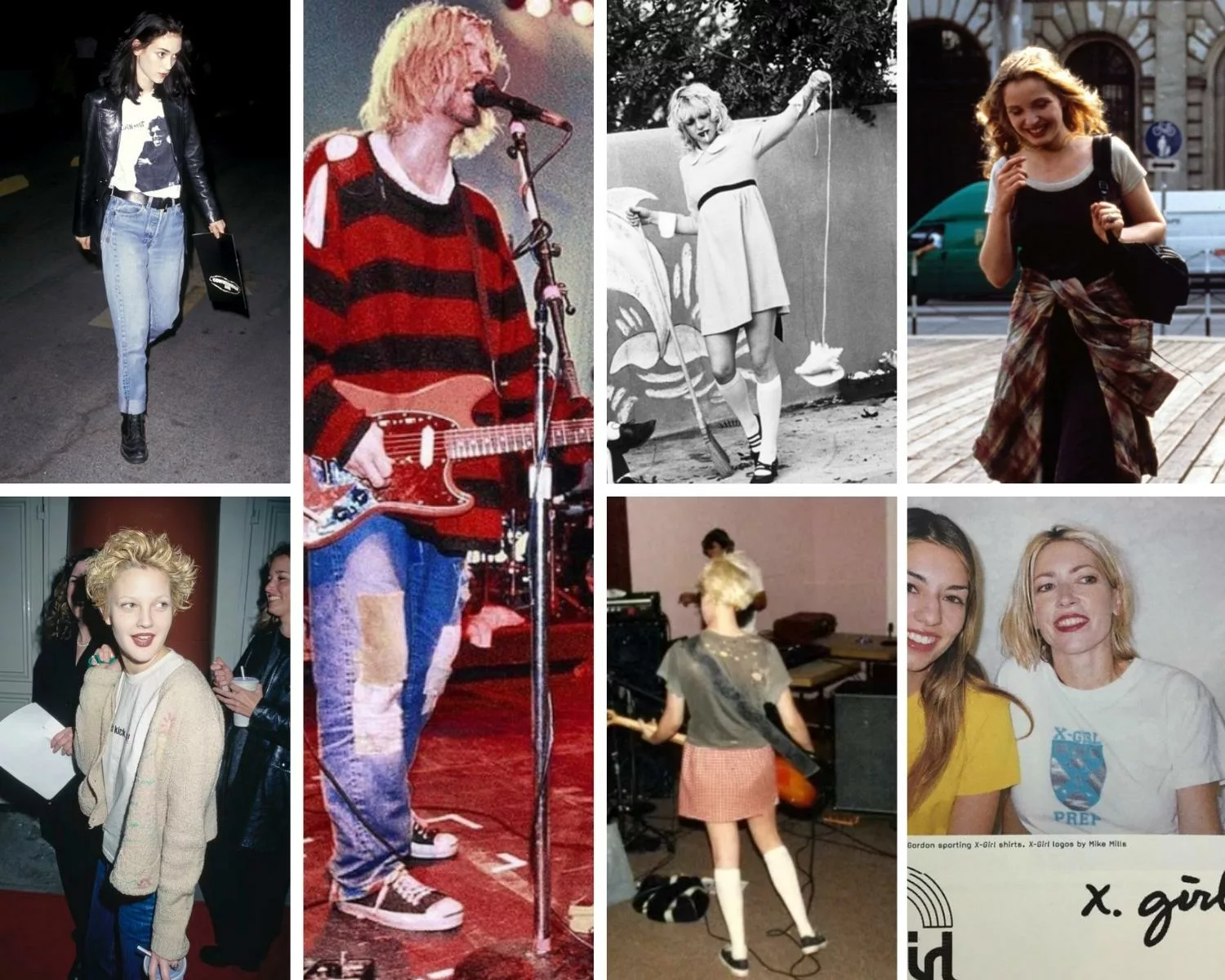
The impact of the Grunge movement in the 90s can be seen in the influential works of renowned fashion designers such as Marc Jacobs and Alexander Wang. Their runway collections have been greatly inspired by the rebellious and nonconformist essence of Grunge, incorporating elements that challenged traditional fashion norms. Let us delve into how these visionary designers have embraced and redefined the revolution brought forth by Grunge.
1. Marc Jacobs: Marc Jacobs, a pioneer in the fashion industry, recognized the alternative aesthetic and raw energy that Grunge represented. With his notable collections, he artfully blended the grunge-inspired elements like distressed denim, flannel shirts, and combat boots, with luxurious fabrics and intricate details. Jacobs challenged the boundaries of high fashion by seamlessly merging the grunge subculture with sophistication and elegance, creating a stylish and eclectic fusion.
- One of Jacobs’ iconic moments was his Spring 1993 collection for Perry Ellis, where he boldly infused grunge elements, like plaids and oversized knits, into the traditionally prim and proper designs.
- His innovative approach and willingness to push boundaries caught the attention of the fashion world, transforming the perception of Grunge from a countercultural movement to a runway-worthy style.
2. Alexander Wang: Another influential designer who drew inspiration from Grunge is Alexander Wang. His designs are characterized by their edginess, streetwear influences, and a touch of Grunge rebellion. Wang skillfully incorporates grunge elements like leather jackets, band t-shirts, and ripped denim, adding his unique twist to create a modern interpretation of the style.
- Wang’s Fall 2008 collection, in particular, made a large impact on the fashion industry, as he showcased a range of looks that effortlessly combined grunge aesthetics with a luxurious and urban feel.
- His ability to merge seemingly contradictory elements and create cohesive collections has cemented his position as a leading figure in contemporary fashion, showcasing the lasting influence of Grunge on the runway.
In conclusion, the influence of Grunge on the runway extends far beyond its initial countercultural roots. Designers like Marc Jacobs and Alexander Wang have embraced the subversive nature of Grunge, infusing it with their unique visions to redefine the fashion industry. By incorporating grunge elements into their collections, they have challenged traditional fashion norms and paved the way for a new wave of creativity and individuality in the industry.
Reviving Grunge: Modern Interpretations
The enduring influence of the Grunge movement in the 90s continues to shape the fashion industry today. This section examines the contemporary revival of Grunge and explores the modern interpretations that have evolved from its edgy and nonconformist roots.
With a rebellious spirit and a distinctive aesthetic, Grunge fashion has undergone a revival in recent years, embracing a new generation of fashion enthusiasts. The essence of Grunge has been reimagined, blending elements of nostalgia and subversiveness with a contemporary twist. From the streets to the runways, designers and influencers alike have embraced the raw and undone aesthetic of Grunge, creating modern interpretations that capture the essence of the original movement.
This reinvention of Grunge often incorporates elements like layering, oversized silhouettes, and distressed detailing, all of which contribute to the nonchalant and effortlessly cool vibe that defines the style. Bold patterns and graphic prints coexist with neutral tones, adding a touch of modernity to the iconic palette of plaid and black. This juxtaposition of contrasting elements creates a unique visual appeal and empowers individuals to experiment and express their individuality.
Furthermore, the revival of Grunge fashion has extended beyond clothing and encompassed accessories as well. Statement accessories, such as chunky boots, studded belts, and chokers, have become essential elements in modern interpretations of Grunge. These accessories add an element of subversion and visual interest to outfits, elevating them to the next level.
Modern interpretations of Grunge fashion also embrace sustainability and ethical practices. Emphasizing the importance of reducing waste and promoting slow fashion, contemporary Grunge enthusiasts often opt for vintage pieces or eco-friendly alternatives. This conscious approach not only pays homage to the original movement’s DIY ethos but also reflects the growing awareness and concern for environmental issues within the fashion industry.
In conclusion, the revival of Grunge fashion has breathed new life into an iconic movement, allowing its rebellious spirit and raw aesthetic to resonate with a new generation. Through modern interpretations that blend nostalgia, nonconformity, and sustainability, Grunge continues to shape and redefine the fashion industry, proving that its influence is timeless.
Questions and answers
How did grunge fashion change the fashion industry in the 90s?
In the 90s, grunge fashion brought a revolutionary change to the fashion industry. It challenged the traditional notions of beauty and emphasized a more effortless and undone look. Grunge fashion embraced elements such as ripped jeans, flannel shirts, oversized sweaters, and combat boots, which defied the glamorous and polished styles of the time. This fashion movement gave rise to a new aesthetic that resonated with the youth culture, ultimately influencing high fashion designers and reshaping the industry.
What were the key characteristics of grunge fashion in the 90s?
Grunge fashion in the 90s was characterized by its anti-establishment sentiment and a rejection of the mainstream fashion norms. It embraced a rough and disheveled aesthetic, featuring oversized and layered clothing, often composed of ripped or heavily distressed pieces. The color palette was predominantly dark and earthy, with a focus on plaid patterns and washed-out denim. Grunge fashion also popularized elements such as flannel shirts, combat boots, beanies, and band t-shirts, which became iconic symbols of the movement.
How did grunge fashion influence high fashion designers?
Grunge fashion had a profound influence on high fashion designers in the 90s. Designers like Marc Jacobs and Anna Sui drew inspiration from the grunge movement and incorporated its key elements into their collections. They translated the rough and casual aesthetic of grunge into luxury garments, using high-quality materials and intricate detailing. This fusion of high fashion with grunge elements sparked controversy and disrupted the traditional fashion landscape, ultimately leading to the acceptance of more casual and alternative styles within the industry.
Why did grunge fashion resonate so strongly with the youth culture of the 90s?
Grunge fashion resonated with the youth culture of the 90s due to its rebellious and nonconformist nature. The youth of that era, disillusioned with the commercialization of mainstream fashion, found solace in the grunge movement’s anti-establishment ethos. It provided them with a sense of identity and self-expression, allowing them to reject societal norms and embrace a more authentic and individualistic style. Grunge fashion became a symbol of rebellion, capturing the frustrations and aspirations of the youth generation during that time.
Did grunge fashion have a lasting impact on the fashion industry?
Yes, grunge fashion had a lasting impact on the fashion industry. Its influence can still be seen in contemporary fashion trends, with elements such as ripped jeans, flannel shirts, and combat boots continuing to be popular. The grunge movement challenged the traditional definition of beauty and paved the way for a more inclusive and diverse industry. It inspired designers to push boundaries and experiment with alternative styles, ultimately leading to a more relaxed and eclectic approach to fashion. Grunge fashion has become a part of fashion history, forever leaving its mark on the industry.
How did 90s fashion revolutionize the industry?
90s fashion revolutionized the industry by introducing a new aesthetic that was raw, edgy, and anti-establishment. Designers started to incorporate elements such as oversized flannel shirts, ripped jeans, and combat boots, which challenged traditional fashion norms and embraced a more grungy and non-conformist style.
What were the key fashion trends of the grunge era?
The key fashion trends of the grunge era included distressed denim, plaid flannel shirts, band t-shirts, combat boots, beanies, and leather jackets. This style was characterized by its relaxed and disheveled look, inspired by the music scene in Seattle during the 90s.
Why did grunge fashion become so popular in the 90s?
Grunge fashion became popular in the 90s because it resonated with the prevailing cultural and social attitudes of the time. It represented a rebellion against the mainstream, consumer-driven fashion industry and embodied a sense of authenticity and individuality. The music scene, particularly bands like Nirvana, played a crucial role in popularizing this fashion style.
How did grunge fashion influence other areas of popular culture?
Grunge fashion influenced other areas of popular culture by breaking the boundaries of traditional fashion. It inspired the creation of alternative subcultures and had a significant impact on music, art, and film. The grunge aesthetic also became a source of inspiration for high fashion designers, who started incorporating elements of grunge into their collections, further propelling its influence.
Is grunge fashion still relevant today?
Grunge fashion continues to have a lasting impact and remains relevant in the fashion industry today. While it may have evolved and been adapted to fit contemporary trends, elements of grunge, such as distressed denim, flannel shirts, and combat boots, can still be seen on runways and in street style. Grunge fashion represents a timeless rebellion against the conventional and continues to inspire new fashion movements.



